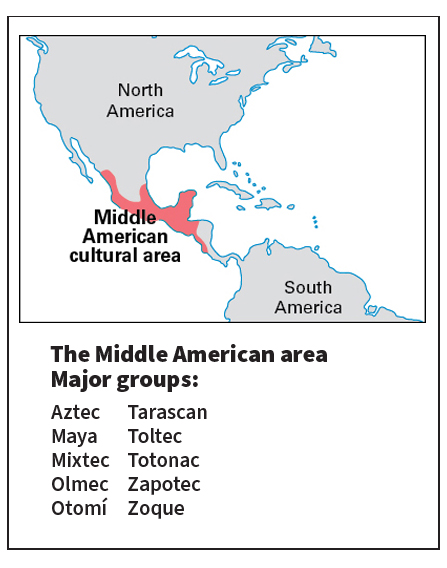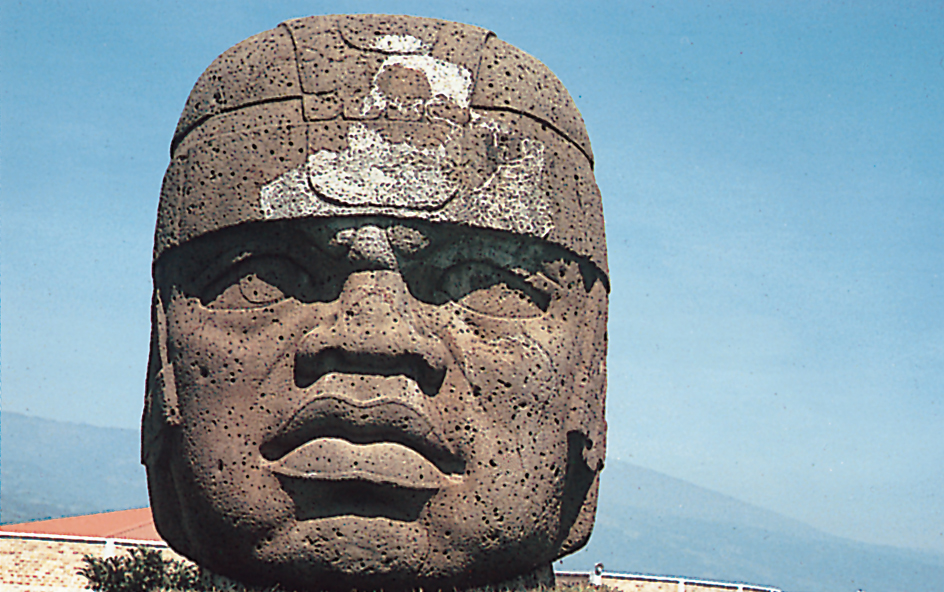Olmec << OHL mehk >> developed what may have been the earliest civilization in North America. The Olmec civilization flourished between about 1250 and 400 B.C. on the Mexican Gulf Coast, in what are now the states of Veracruz and Tabasco. Some scholars recognize Olmec influences in the artwork and religious practices of later American cultures. These cultures include the Maya and the Aztec.

The Olmec built their largest sites atop natural rises within seasonally flooded lowlands. Olmec workers leveled some of these hills. They built massive earthen mounds on others. The largest Olmec site, called San Lorenzo today, covered more than 2 square miles (5 square kilometers). It was the biggest American settlement of its time. The Olmec grew crops on lands made fertile by seasonal flooding. They also fished and collected wild plant foods. Rivers served as important routes for transportation, communication, and trade.
The Olmec are best known for their colossal carved stone sculptures. These include huge human heads, massive tabletop altars, and figures with both animal and human features. Some of the sculptures weigh up to 36,000 pounds (16,300 kilograms). Olmec artisans carved the sculptures from gigantic stones that were transported from sites more than 50 miles (80 kilometers) away. Other objects found at Olmec sites include polished stone mirrors, blocks of a stone called serpentine, polished stone axes, and carved wooden human busts. Many of these materials came from hundreds of miles away. Some of these objects were placed in symbolic positions at Olmec sites. Others were stored in large caches (hidden storage places).

See also Maya (History); Sculpture (Indian sculpture of the Americas).
